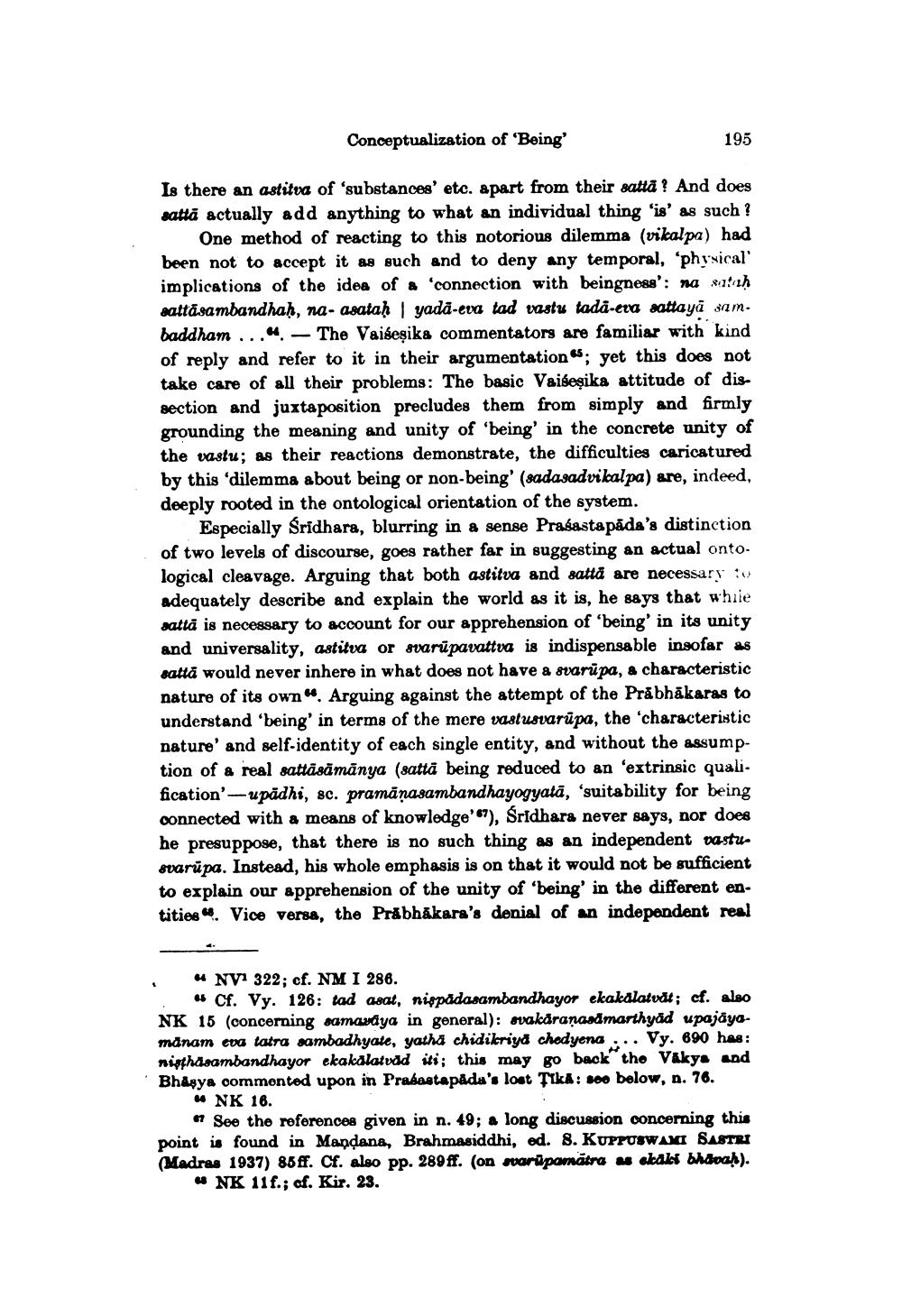________________
195
Conceptualization of 'Being'
Is there an astitva of 'substances' etc. apart from their satta? And does satta actually add anything to what an individual thing 'is' as such? One method of reacting to this notorious dilemma (vikalpa) had been not to accept it as such and to deny any temporal, 'physical' implications of the idea of a 'connection with beingness': na sataḥ sattasambandhaḥ, na- asataḥ | yada-eva tad vastu tada-eva sattaya sam. baddham....The Vaisesika commentators are familiar with kind of reply and refer to it in their argumentation; yet this does not take care of all their problems: The basic Vaisesika attitude of dissection and juxtaposition precludes them from simply and firmly grounding the meaning and unity of 'being' in the concrete unity of the vastu; as their reactions demonstrate, the difficulties caricatured by this 'dilemma about being or non-being' (sadasadvikalpa) are, indeed, deeply rooted in the ontological orientation of the system.
Especially Sridhara, blurring in a sense Prasastapada's distinction of two levels of discourse, goes rather far in suggesting an actual onto. logical cleavage. Arguing that both astitva and satta are necessary to adequately describe and explain the world as it is, he says that while satta is necessary to account for our apprehension of 'being' in its unity and universality, astitva or svarüpavattva is indispensable insofar as satta would never inhere in what does not have a svarupa, a characteristic nature of its own". Arguing against the attempt of the Prabhakaras to understand 'being' in terms of the mere vastusvarupa, the 'characteristic nature' and self-identity of each single entity, and without the assumption of a real sattāsāmānya (satta being reduced to an 'extrinsic qualification'-upadhi, sc. pramāṇasambandhayogyatā, 'suitability for being connected with a means of knowledge'"), Sridhara never says, nor does he presuppose, that there is no such thing as an independent vastu svarupa. Instead, his whole emphasis is on that it would not be sufficient to explain our apprehension of the unity of 'being' in the different entities. Vice versa, the Prabhakara's denial of an independent real
44 NV 322; cf. NM I 286.
"Cf. Vy. 126: tad asat, nispädasambandhayor ekakalatvät; cf. also NK 15 (concerning samaraya in general): svakaraṇasamarthyad upajayamanam eva tatra sambadhyate, yatha chidikriya chedyena Vy. 690 has: nisthāsambandhayor ekakalatvad iti; this may go back the Vakys and Bhasya commented upon in Prasastapada's lost Tika: see below, n. 76.
4 NK 16.
7 See the references given in n. 49; a long discussion concerning this point is found in Mandana, Brahmasiddhi, ed. 8. KUPPUSWAMI SASTRI (Madras 1937) 85 ff. Cf. also pp. 289 ff. (on svarupamätra as skāki bhavaḥ). NK 11f.; cf. Kir. 23.




